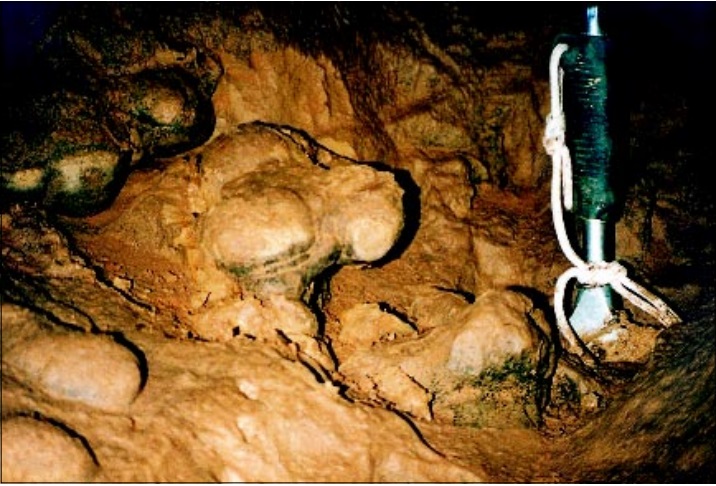Diagenetic Concretions from the Cave Clastic Sediment, Cave in Tounj Quarry, Croatia
DOI:
https://doi.org/10.3986/ac.v27i2.504Abstract
Prispevek podaja rezultate preučevanja diagenetskih konkrecij iz Jame v kamnolomu Tounj (srednja Hrvaška). Konkrecije se pojavljajo v nestrjenem in nesortiranem klastičnem jamskem nanosu. Sestavljajo jih delci različne velikosti (od gline do prodnikov) in različnega izvora. Del kalcitnih in glinastih mineralov izvira iz kapnikov in apnenčevih jamski sten. Detritični delci, kot so roženec, kremen, muskovit, klorit, ilmenit, magnetit in večji del glin, so verjetno nanešeni v jamo s površja, s triasnih in pleistocenskih klastičnih sedimentov. Avtohtone sestavine konkrecij so limonitni pizoidi in nekaj kalcitnega veziva. Sestava konkrecij je podobna sestavi okoliškega nevezanega sedimenta.
Diagenetic concretions from Cave in Tounj quarry (central Croatia) are studied. Concretions are found in non-cemented unsorted clastic cave deposit. They consist of particles of different size (clay to pebble) and from different provenance. One part of calcite and clay minerals are coming from speleothems and cave walls limestone. Detrital particles: chert, quartz, muscovite, chlorite, ilmenite, magnetite and most of clay, are probable transported into the cave from Triassic and Pleistocene clastic sediments from the surface. Autochthonous constituents of concretions are limonitic pizoids and some calcite cement. Composition of concretion is similar to the composition of surrounding non-cemented sediment.
Downloads

Downloads
Published
How to Cite
Issue
Section
License
Authors guarantee that the work is their own original creation and does not infringe any statutory or common-law copyright or any proprietary right of any third party. In case of claims by third parties, authors commit their self to defend the interests of the publisher, and shall cover any potential costs.
More in: Submission chapter




